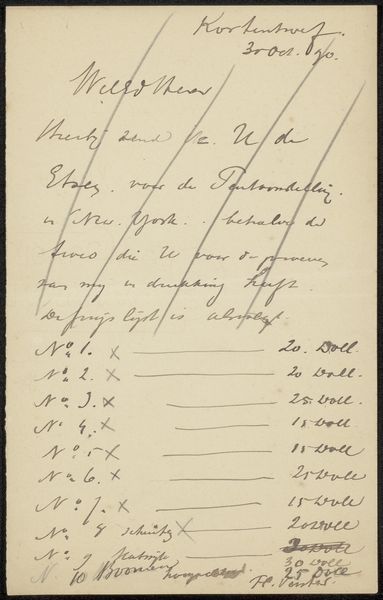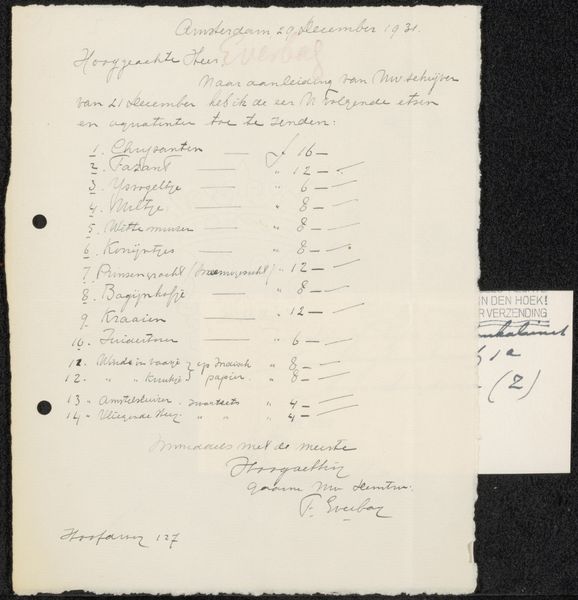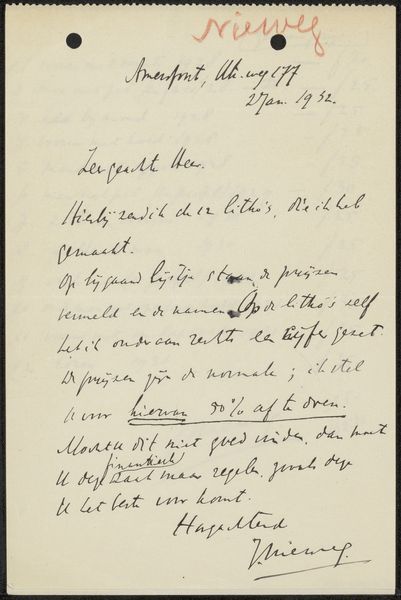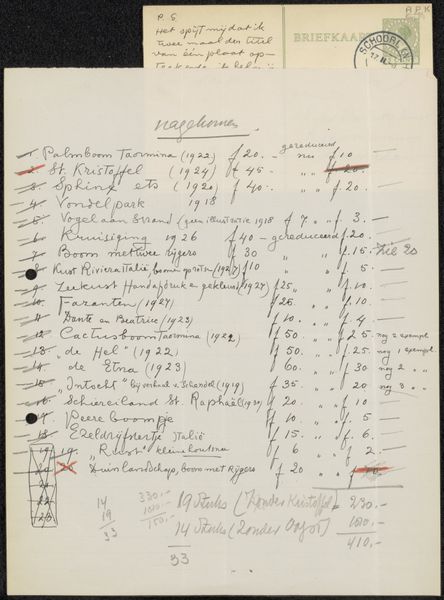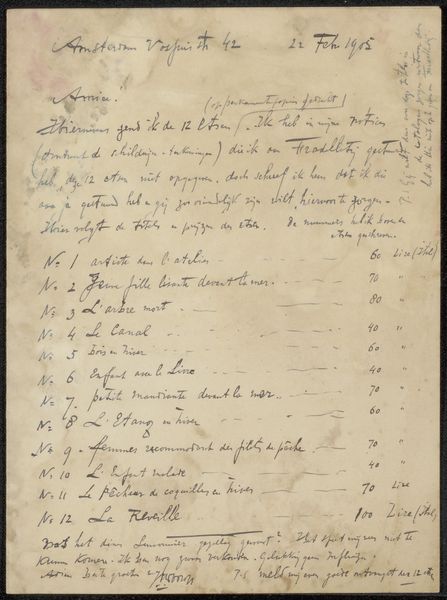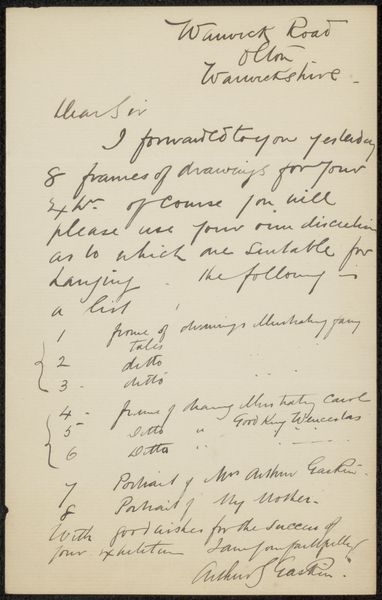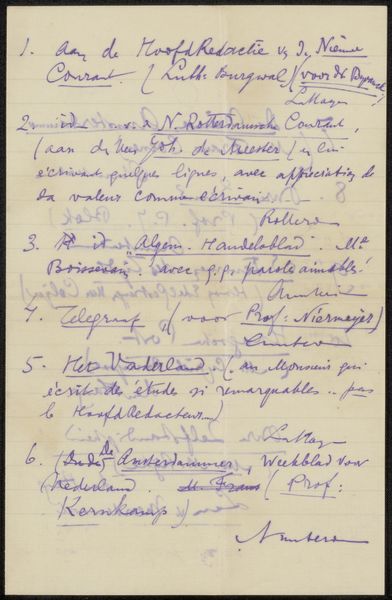
drawing, paper, ink
#
drawing
#
hand-lettering
#
dutch-golden-age
#
hand drawn type
#
landscape
#
hand lettering
#
paper
#
personal sketchbook
#
ink
#
sketchbook drawing
Copyright: Rijks Museum: Open Domain
Editor: This drawing, "Aantekening aan Philip Zilcken," made by Carel Nicolaas Storm van 's-Gravesande between 1851 and 1924, is displayed at the Rijksmuseum. It's a handwritten note, a list actually, penned in ink on paper, reminiscent of a personal sketchbook page. I am really drawn to the informal look and how handwriting can express character. What can you tell us about it? Curator: This is a fascinating piece precisely because it *isn't* intended for public display in the way we typically think about art. It offers a glimpse into the artistic infrastructure of the time. We see a list, probably titles and prices, related to what seem like landscape works, focusing on coastal scenes around Scheveningen, reflecting the popularity of this location with artists of the period. What does the act of listing artwork in this manner tell us about artistic production and its connection to the art market in the Netherlands at this time? Editor: I hadn’t considered the economics involved. Is this just about selling landscapes? Curator: Partly. Think about the role of the art dealer like Zilcken, to whom the note is addressed. They mediated between the artist and the buying public, so documenting pricing and potential subjects becomes important for successful business and marketing. Did Storm van 's-Gravesande gain prominence because of these popular coastal landscapes? Editor: So it shows the behind-the-scenes reality of making a living as an artist. I appreciate seeing the tangible connection between art and the society it existed within. Curator: Exactly. By seeing notes and personal ephemera like this, it enriches our knowledge beyond merely considering what hung on gallery walls, offering instead a view into what was happening behind them and who helped make it all happen. Editor: I didn’t expect a simple list could be so insightful. Thanks!
Comments
No comments
Be the first to comment and join the conversation on the ultimate creative platform.


